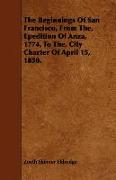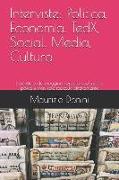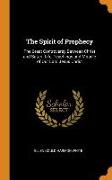The Beginnings of San Francisco, from The, Epedition of Anza, 1774, to The, City Charter of April 15, 1850
BücherAngebote / Angebote:
THE COMING OF THE ARGONAUTS 1849-1850 YEARS before the discovery of goId on the American river gold placers had been worked in California with varying degrees of success. But little attention was paid to this industry and it was not considered of much importance by either the Californians or the foreigners residing in their midst. The priests discouraged mining, the rancheros were indifferent to it, and neither has wished to see the country filled with a mining population. On March 2, , the deputy for California to the Mexican congress, Don Manuel Castafiares, reported to his government the discovery of gold in the vicinity of Los AngeIes the previous year. These mines had produced from about the middle of the year to December 1843 two thousand ounces, the most of which had been sent to the United States. He said the placers extended a distance of nearly thirty Ieagues seventy-eight miles. William H. Thornes, writing from San Pedro where the ship Admittance was raking cargo June 30, 1843, says Here we also received ten iron flasks of gold dust, although where the latter came from no one knew, but it was reported that the merchants of the Pueblo Angeles traded for it with the Indians and the latter would not reveal the source whence it came. When Alfred Robinson went to the United States Castaiiares CoItccion dc Documcntos. The placers from which this gold came were on the San Francisco rancho, near the mission of San Fernando. The rancho had formerly belonged to the mission, but at this time was in possession of the Del Valle family. The discovery was made in March 1842 and in the following May, Ignacio Del Valle was appointed encargo de justicias to preserve order in the mining district. William H. Davis says that from eighty to one hundred thousand dollars of gold was taken from these places in two years. Colonel Mason in his report of August 17, 1848, on the gold fields of California says The gold placer near the mission of San Fernando has long been known but has been but little wrought for want of water. But the event that was to set the world abIaze and create an empire on the shores of the Pacific was the discovery by James 1V. Marshall of gold on the American river January 24, 1848. It may seem strange that in a community where the some- what extensive placers of the San Fernando valley received so little attention a discovery of gold placers in the Sacrament0 valley should have created such intense excitement. It may be that the reason for this was that the discovery on the American river was so quickly followed by reports of the great extent of the gold region and the astonishing richness of the placers. The gold deposits were on or near the surface, no capital was required to work them, and a Iaboring man with nothing but his pick, shovel, and pan could obtain from one to two or more ounces per day, with the possibility, always, of acquiring a fortune in a few weeks. In the foothills of the sierras about forty-five miles northeast of the Embarcadero of the Sacra- rnento, on the south fork of the American river, Captain Sutter was building a sawmill in the fall and winter of 1847, and employed James W. Marshall to superintend the work. In digging a tail race for the mill, Marshal1 was in the habit of turning the water into the ditch at night to wash out the dirt loosened by the workmen during the day...
Folgt in ca. 15 Arbeitstagen




